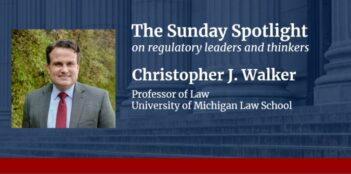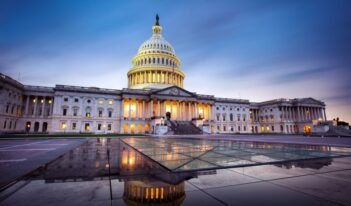
Regulatory excellence can best be understood in terms of inspiring stories.
What do the Federal Bureau of Investigation (FBI), an Australian insurance scandal, and a smoking advertisement have to do with one another?
Each can offer insights into what distinguishes the “excellent” regulators of the world, according to John Braithwaite, a professor at Australian National University and the founder of the university’s RegNet program.
In a recent book, Braithwaite draws on the experiences of the FBI and an Australian consumer agency to describe what he deems the hallmark of regulatory excellence: the ability of regulators to seize opportunities that will transform industries or the public for good. According to Braithwaite, regulators who fixate only on following rules cannot address society’s most pressing regulatory problems that need bold, creative solutions.
The 9/11 World Trade Center attacks and the 2008 U.S. financial crisis demonstrate that inadequate regulatory responsiveness can be detrimental to society, writes Braithwaite. He explains that, after low-level FBI bureaucrats flagged warning signs for both major crises, top FBI leaders assigned those reports low priority and instead focused on the agency’s more routine criminal work that they expected to yield more measurable results.
Although street-level FBI agents noticed Osama bin Laden sending students to the U.S. for flight lessons, government officials took no action addressing these early indicators of catastrophe. Braithwaite contends that the FBI’s devotion to its measurable and more routine criminal enforcement work resulted in its failure to protect the United States from larger security risks.
Much the same non-response followed when FBI officials later noticed a “tsunami” of small home loan mortgage fraud cases that were ultimately linked to the global financial crisis of 2007-2008, he writes.
Braithwaite contrasts the FBI’s performance with the Australian Competition and Consumer Commission (ACCC), an example of what he considers an excellent regulator. In one case, the ACCC confronted an epidemic of insurance fraud—primarily targeting the aboriginal communities—with an approach that focused on restorative justice rather than criminal charges. The ACCC ensured that the insurance executives met with victims and officials of the affected communities, which ultimately led to more meaningful follow-up reform meetings, press conferences, internal investigations, and compensation to the fraud victims. Braithwaite states that the ACCC’s strategy resulted in regulatory reforms that addressed both the immediate problem but also prevented broader and deeper problems by transforming a whole industry.
Braithwaite does acknowledge that the ACCC has not always been the hallmark of excellence. He discusses a deal the ACCC negotiated with the Tobacco Institute to launch a series of advertisements stating that no proof existed of passive smoking as a danger to health. The Australian Federation of Consumer Organizations, a staunch representative of consumer protection, challenged the advertisement in court as false and misleading. As soon as the court found that passive smoking did indeed pose a danger to public health, state governments passed laws that regulated smoking in public areas. According to Braithwaite, critics of the advertisement deal highlighted how the ACCC Chair—who held connections to the tobacco industry—approved of the deal in a “smoke-filled room” with no one present to advocate for consumers. The ACCC learned from this regulatory failure. To prevent future deals negotiated with a lack of transparency and representation, the ACCC, other regulatory bodies, consumers, and academics held meetings to incorporate checks and balances into the Commission’s decision-making procedures.
Excellent regulators, Braithwaite asserts, are those with stories about both managing risk well as well as taking risks in pursuit of the agency’s statutory objectives. Excellent regulators also build a culture of initiative and leadership from below. He adds that regulatory excellence can only exist within a regulatory design that fosters innovative collaborations with outside networks. Rather than only operating and strategizing within their own institutions, regulators should engage with networks beyond their own horizon, he argues.
Braithwaite further explains that the best regulators maintain a “transformative imagination and a cosmopolitan regulatory imagination.” This regulatory imagination will lead to a commitment in assessing and addressing the most important problems rather than the most measurable ones. If regulators only measure success through established performance measures, he states, they will fail to learn of the new and unique issues in the ever-evolving regulatory world, let alone be able meaningfully to address them.
Ultimately, if a regulatory agency lacks a culture of “responsive excellence,” the agency will need institutional transformation, Braithwaite argues. He suggests changing the leadership of the agency, embedding an entrepreneurial spirit throughout the organization with staff training, removing procedural constraints, and redrafting the agency’s legal mandate so the core principles truly encourage the regulators to focus on the transformative impact of their public service.
Quoting scholars Clifford Shearing and Richard Ericson, Braithwaite declares that when it comes to achieving regulatory excellence, “culture is not a rulebook but a storybook.” Regulators’ stories about making a meaningful and transformative difference in society—not the specific rules that regulators make or uphold—are what matter the most to the people that regulatory agencies serve.
Braithwaite’s insights on what makes an excellent regulator can be found in full in the book Achieving Regulatory Excellence, edited by Cary Coglianese, a professor at the University of Pennsylvania Law School and the director of the Penn Program on Regulation.
This essay is part of a ten-part series, entitled In Pursuit of Regulatory Excellence.



